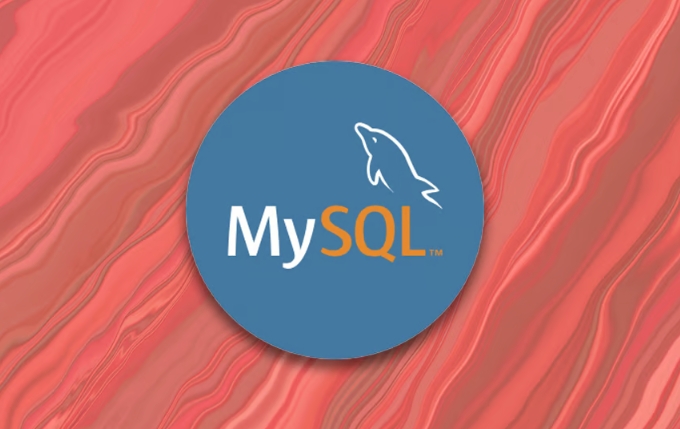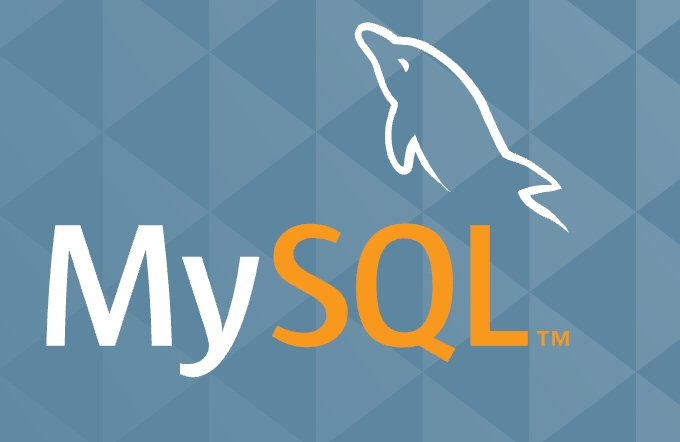mysqldump is a common tool for performing logical backups of MySQL databases. It generates SQL files containing CREATE and INSERT statements to rebuild the database. 1. It does not back up the original files, but converts the database structure and content into portable SQL commands; 2. It is suitable for small databases or selective recovery, and is not suitable for fast recovery of TB-level data; 3. Common options include --single-transaction, --databases, --all-databases, --routines, etc.; 4. Use the mysql command to import during recovery, and foreign key checks can be turned off to improve speed; 5. It is recommended to test backup regularly, use compression, automated scheduling, naming with metadata and monitoring disk space.

When you need to back up your MySQL databases, mysqldump is one of the most commonly used tools for performing logical backups. It generates SQL files that contain CREATE and INSERT statements needed to rebuild the database. This method is especially useful when you want to migrate data, restore selectively, or version-control schema changes.

What a Logical Backup with mysqldump Actually Does
A logical backup isn't a direct copy of your database files on disk — instead, it's a set of SQL statements that can recreate your database structure and contents. When you run mysqldump , it reads the tables from your running MySQL server and converts them into text-based SQL commands.

This means:
- You're not backing up raw
.ibdor.frmfiles. - The output is portable across different platforms and MySQL versions (to some extent).
- It's not the fastest way to back up huge databases, but it's flexible and easy to inspect or modify.
So if you're looking for something quick for disaster recovery of terabyte-scale data, this might not be the best choice. But for smaller databases or selective restores, it's solid.

Basic Command Structure and Common Options
The basic usage of mysqldump looks like this:
mysqldump [options] [db_name [tbl_name ...]]
Here are a few practical examples based on real-world scenarios:
Dump a single database:
mysqldump -u username -p dbname > backup.sql
Dump multiple databases:
mysqldump -u username -p --databases db1 db2 > backup.sql
Dump all databases:
mysqldump -u username -p --all-databases > backup.sql
Some options you'll often see:
-
--single-transaction: Helps get a consistent snapshot without locking tables (good for InnoDB). -
-hor--host: Connects to a remote MySQL server. -
--routines,--events,--triggers: Include stored routines, events, and triggers in the dump. -
--no-dataor-d: Only dump the schema, not the data.
If you're planning to use these dumps for restoring later, consider adding --add-drop-table or --add-drop-database so that existing tables are dropped before being recreated.
How to Restore From a Dump File
Restoring from a mysqldump file is straightforward. You just feed the SQL file back into the mysql command-line client:
mysql -u username -p dbname < backup.sql
But here's what people sometimes forget:
- If the database doesn't exist already, create it first.
- Make sure the user has proper privileges.
- If the dump includes multiple databases or uses
CREATE DATABASE, you might not need to specify a target database name.
Also, large dumps can take time. If you're restoring a multi-gigabyte file, consider disabling foreign key checks at the start:
SET foreign_key_checks = 0;
Then re-enable them after import:
SET foreign_key_checks = 1;
Just be cautious — turning off constraints can lead to inconsistencies if the data isn't clean.
Tips for Managing mysqldump Backups Effectively
Backups only help if they work when you need them. Here are a few tips to make your workflow smoother:
Test your backups regularly : Try restoring them somewhere safe to ensure they haven't been corrupted or missed something important.
Use compression : Pipe the output to
gzipto save space:mysqldump -u user -p dbname | gzip > backup.sql.gz
Automate with cron : Schedule regular backups using cron jobs. Just remember to handle rotation — old backups take up space too.
Include metadata in filenames : Add date or version info to your backup files so it's easier to track which one is currently:
mysqldump -u user -p dbname > backup_$(date %F).sql
Monitor disk space : Especially if you keep daily backups, make sure your storage doesn't fill up unexpectedly.
You don't need anything fancy to start with mysqldump . Just a little planning and consistency go a long way.
Basically that's it.
The above is the detailed content of Performing logical backups using mysqldump in MySQL. For more information, please follow other related articles on the PHP Chinese website!

Hot AI Tools

Undress AI Tool
Undress images for free

Undresser.AI Undress
AI-powered app for creating realistic nude photos

AI Clothes Remover
Online AI tool for removing clothes from photos.

Clothoff.io
AI clothes remover

Video Face Swap
Swap faces in any video effortlessly with our completely free AI face swap tool!

Hot Article

Hot Tools

Notepad++7.3.1
Easy-to-use and free code editor

SublimeText3 Chinese version
Chinese version, very easy to use

Zend Studio 13.0.1
Powerful PHP integrated development environment

Dreamweaver CS6
Visual web development tools

SublimeText3 Mac version
God-level code editing software (SublimeText3)

Hot Topics
 Choosing appropriate data types for columns in MySQL tables
Jul 15, 2025 am 02:25 AM
Choosing appropriate data types for columns in MySQL tables
Jul 15, 2025 am 02:25 AM
WhensettingupMySQLtables,choosingtherightdatatypesiscrucialforefficiencyandscalability.1)Understandthedataeachcolumnwillstore—numbers,text,dates,orflags—andchooseaccordingly.2)UseCHARforfixed-lengthdatalikecountrycodesandVARCHARforvariable-lengthdata
 How to use PHP to develop a Q&A community platform Detailed explanation of PHP interactive community monetization model
Jul 23, 2025 pm 07:21 PM
How to use PHP to develop a Q&A community platform Detailed explanation of PHP interactive community monetization model
Jul 23, 2025 pm 07:21 PM
1. The first choice for the Laravel MySQL Vue/React combination in the PHP development question and answer community is the first choice for Laravel MySQL Vue/React combination, due to its maturity in the ecosystem and high development efficiency; 2. High performance requires dependence on cache (Redis), database optimization, CDN and asynchronous queues; 3. Security must be done with input filtering, CSRF protection, HTTPS, password encryption and permission control; 4. Money optional advertising, member subscription, rewards, commissions, knowledge payment and other models, the core is to match community tone and user needs.
 Setting up semi-synchronous replication in MySQL
Jul 15, 2025 am 02:35 AM
Setting up semi-synchronous replication in MySQL
Jul 15, 2025 am 02:35 AM
The steps for setting MySQL semi-synchronous replication are as follows: 1. Confirm the version supports and load the plug-in; 2. Turn on and enable semi-synchronous mode; 3. Check the status and operation status; 4. Pay attention to timeout settings, multi-slave library configuration and master-slave switching processing. It is necessary to ensure that MySQL 5.5 and above versions are installed, rpl_semi_sync_master and rpl_semi_sync_slave plugins, enable corresponding parameters in the master and slave library, and configure automatic loading in my.cnf, restart the service after the settings are completed, check the status through SHOWSTATUS, reasonably adjust the timeout time and monitor the plug-in operation.
 how to connect excel to mysql database
Jul 16, 2025 am 02:52 AM
how to connect excel to mysql database
Jul 16, 2025 am 02:52 AM
There are three ways to connect Excel to MySQL database: 1. Use PowerQuery: After installing the MySQLODBC driver, establish connections and import data through Excel's built-in PowerQuery function, and support timed refresh; 2. Use MySQLforExcel plug-in: The official plug-in provides a friendly interface, supports two-way synchronization and table import back to MySQL, and pay attention to version compatibility; 3. Use VBA ADO programming: suitable for advanced users, and achieve flexible connections and queries by writing macro code. Choose the appropriate method according to your needs and technical level. PowerQuery or MySQLforExcel is recommended for daily use, and VBA is better for automated processing.
 Automating MySQL Deployments with Infrastructure as Code
Jul 20, 2025 am 01:49 AM
Automating MySQL Deployments with Infrastructure as Code
Jul 20, 2025 am 01:49 AM
To achieve MySQL deployment automation, the key is to use Terraform to define resources, Ansible management configuration, Git for version control, and strengthen security and permission management. 1. Use Terraform to define MySQL instances, such as the version, type, access control and other resource attributes of AWSRDS; 2. Use AnsiblePlaybook to realize detailed configurations such as database user creation, permission settings, etc.; 3. All configuration files are included in Git management, support change tracking and collaborative development; 4. Avoid hard-coded sensitive information, use Vault or AnsibleVault to manage passwords, and set access control and minimum permission principles.
 How to set environment variables in PHP environment Description of adding PHP running environment variables
Jul 25, 2025 pm 08:33 PM
How to set environment variables in PHP environment Description of adding PHP running environment variables
Jul 25, 2025 pm 08:33 PM
There are three main ways to set environment variables in PHP: 1. Global configuration through php.ini; 2. Passed through a web server (such as SetEnv of Apache or fastcgi_param of Nginx); 3. Use putenv() function in PHP scripts. Among them, php.ini is suitable for global and infrequently changing configurations, web server configuration is suitable for scenarios that need to be isolated, and putenv() is suitable for temporary variables. Persistence policies include configuration files (such as php.ini or web server configuration), .env files are loaded with dotenv library, and dynamic injection of variables in CI/CD processes. Security management sensitive information should be avoided hard-coded, and it is recommended to use.en
 mysql incorrect string value for column
Jul 15, 2025 am 02:40 AM
mysql incorrect string value for column
Jul 15, 2025 am 02:40 AM
MySQL error "incorrectstringvalueforcolumn" is usually because the field character set does not support four-byte characters such as emoji. 1. Cause of error: MySQL's utf8 character set only supports three-byte characters and cannot store four-byte emoji; 2. Solution: Change the database, table, fields and connections to utf8mb4 character set; 3. Also check whether the configuration files, temporary tables, application layer encoding and client drivers all support utf8mb4; 4. Alternative solution: If you do not need to support four-byte characters, you can filter special characters such as emoji at the application layer.
 How to use PHP to develop product recommendation module PHP recommendation algorithm and user behavior analysis
Jul 23, 2025 pm 07:00 PM
How to use PHP to develop product recommendation module PHP recommendation algorithm and user behavior analysis
Jul 23, 2025 pm 07:00 PM
To collect user behavior data, you need to record browsing, search, purchase and other information into the database through PHP, and clean and analyze it to explore interest preferences; 2. The selection of recommendation algorithms should be determined based on data characteristics: based on content, collaborative filtering, rules or mixed recommendations; 3. Collaborative filtering can be implemented in PHP to calculate user cosine similarity, select K nearest neighbors, weighted prediction scores and recommend high-scoring products; 4. Performance evaluation uses accuracy, recall, F1 value and CTR, conversion rate and verify the effect through A/B tests; 5. Cold start problems can be alleviated through product attributes, user registration information, popular recommendations and expert evaluations; 6. Performance optimization methods include cached recommendation results, asynchronous processing, distributed computing and SQL query optimization, thereby improving recommendation efficiency and user experience.






